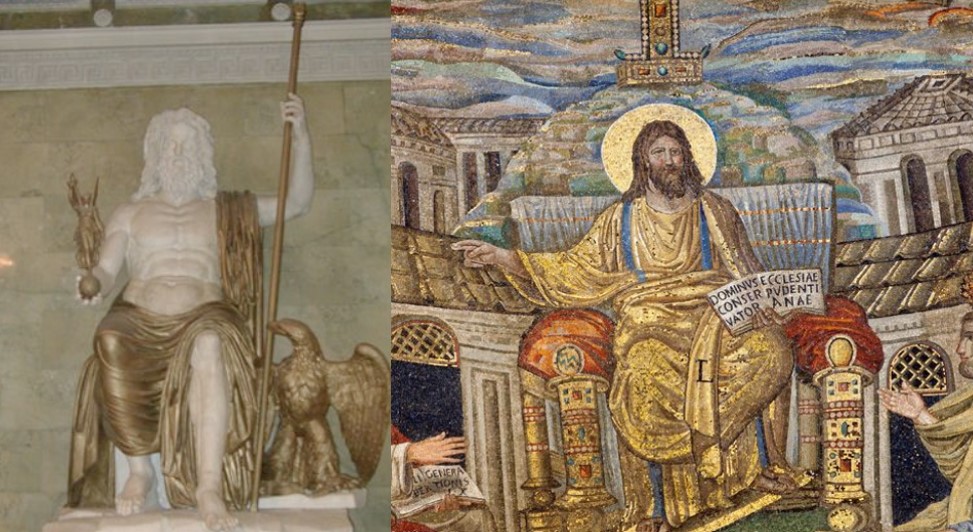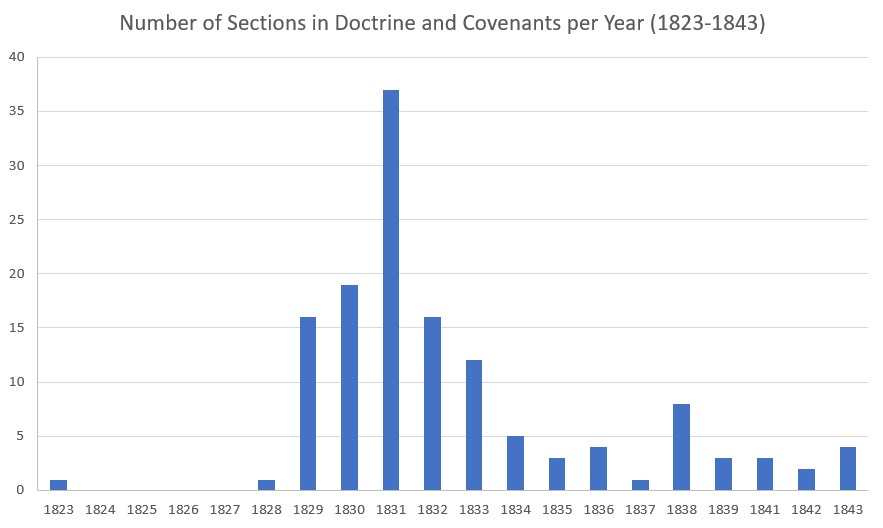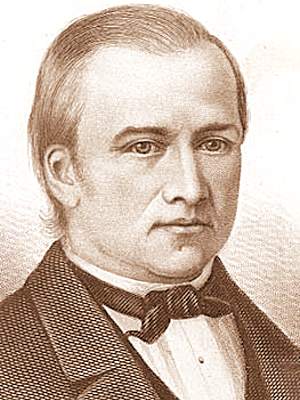Category: Features
-
“There is never but one on the earth at a time”
Polygamy was one of the most divisive and explosive policies that Joseph Smith ever embraced. In many ways, it was what led to Joseph Smith’s death. He knew that it would be a cause of contention, both within the Church of Jesus Christ of Latter-day Saints and with those who were not members, and he…
-
“That they may bear the souls of men”
My wife is 37 weeks pregnant, and she is ready to be done. She’s started writing down a list of reasons she doesn’t enjoy pregnancy for me to use in reminding her next time we start thinking about having another child. She has also assured me that if creating spirit children in the next life…
-
Brittany Chapman Nash on Polygamy
We’re coming up on one of the most dreaded lessons of the Sunday School cycle—no, not reviewing the law of chastity with teenagers, the lesson that includes D&C 132 (the revelation on plural marriage). Polygamy is a topic in the Church that is uncomfortable, troubling and, at times, painful to discuss. Recently, however, the Church…
-
“This ordinance belongeth to my house”
Throughout this year, I’ve talked about the development of temple doctrine as a braiding of strands from Joseph Smith’s theology and cosmology. That continues to be true of the 1840s, when the Latter-day Saints were working on the Nauvoo temple. Previously, when discussing the House of the Lord in Kirtland, I discussed the idea of beholding…
-
“Instituted for travelling Elders”
If you’ve ever asked yourself what exactly is a Seventy, you’re not alone. In fact, I’d dare to say that the question is one of the more persistent ones throughout Church history. Based on two brief mentions in the Bible, the idea of the Seventies is laid out in two separate documents in the Doctrine…
-
“All these things shall give thee experience and shall be for thy good”
For a long time, I underestimated the depth of the trauma experienced by the Latter-day Saints in Missouri and the impact that it had on their psyche. I think I started to grasp it more when I was researching for an essay about Latter-day Saints and their relationship with the US Government (which was an…
-
“Adam shall come to visit”
Charles Darwin’s niece once told her son (the famed British composer Ralph Vaughan Williams) that: “The Bible says that God made the world in six days, Great Uncle Charles thinks it took longer: but we need not worry about it, for it is equally wonderful either way.”[1] While it is wonderful either way, since the…
-

“They saw the Lord”
What does Jesus look like? It’s a question that we can only guess the answer to or speculate about, but one that does come up in a religion that embraces using artistic depictions of members of the Godhead. In general, the scriptures fail to describe his physical appearance in any detail. Joseph Smith documented several…
-

“To ordain and set in order all the other officers of the church”
Section 107 has one of the more complicated histories out of the documents presented in the Doctrine and Covenants. It is not a single revelation, but rather a few that were compiled together and expanded in significant ways, with the individual portions reflecting their original context and some of the later context of the time…
-
“I the Lord have suffered the affliction to come upon them”
During an episode of the popular British Sci-Fi show, Doctor Who, the titular character confronts a woman who has engaged in a series of witch hunts in seventeenth century Britain. The witch hunter explains her view that she is required to: “Kill the witches, defeat Satan. As King James has written in his new Bible,…
-
Terryl Givens on Eugene England
In general, the people who are in a position to be most influential in the Church of Jesus Christ of Latter-day Saints have been official Church leaders. That’s not always the case, however, since there are a number of members of the Church who have proven influential and important in different ways—Truman Madsen, Hugh Nibley,…
-
“The constitution of this Land”
The attitude of Latter-day Saints towards the United States government has historically been paradoxical. As Dale Morgan wrote: “The Mormons had a profound respect for government and governmental forms, but disrespect for and outright distrust of ‘the damned rascals who administer the government.’”[1] Church leaders have encouraged beliefs that inculcate support for governments, yet we…
-
“Concerning the building of mine house”
The temples of the early Latter Day Saint movement were a place where several strands of Joseph Smith’s theology and doctrine were braided together. In the summer of 1833 (in the revelations we are studying this week for “Come, Follow Me”), we can see that braiding happening. Referencing some major topics we’ve already discussed this…
-
Archeology, Ceramics, and the Smith Family in Tunbridge
In addition to written records, people leave behind traces of their material lives that can tell us much about who they were. In a recent interview with Kurt Manwaring, Mark Staker (a Master Curator for the Church History Department’s Historic Sites Division) discussed some of the research he has been doing on the place Joseph…
-
“That you may understand and know”
“The world is changed. … Much that once was is lost, for none now live who remember it. … And some things that should not have been forgotten were lost. History became legend. Legend became myth. And for two and a half thousand years, the [true Gospel] passed out of all knowledge. Until, when chance…
-
“A word of wisdom for the benefit of the Saints”
One of the paradoxes about the Word of Wisdom is that the name (drawn from the opening line of the text from the 27 February 1833 revelation) indicates that it is good advice while it’s treated as a commandment in the Church today. I’ve discussed this in detail in the past, so I’ll leave the…
-
Historical Mindset for Mormons, 101
While studying in a scientific field, two major ideas were drilled into me that have been fairly helpful in interpreting history. First is the belief that nothing can ever truly be proved, only that things can be disproved. If something goes a long time without being disproved, then it is likely (though not certainly) to…
-
“This is the light of Christ“
As one of Joseph Smith’s largest revelations, Doctrine and Covenants, Section 88 (or, as Joseph Smith called it, “the Olieve leaf which we have plucked from the tree of Paradise”) has a lot of different talking points. As historian Richard Lyman Bushman wrote: “Nothing in nineteenth-century literature resembles it. … The ‘Olive Leaf’ runs from…
-
So You Want to Talk About Polygamy?
I’ve long had an interest in understanding how and why my ancestors chose to practice polygamy. During my time at Utah State University, I spent most of my spare time reading Mormon Studies materials and went on a polygamy binge at one point. While reading Kathryn Daynes’s More Wives Than One: Transformation of the Mormon…
-
Joseph F. Merrill—Science, Religion, and Innovation
Joseph F. Merrill is an apostle who has largely been forgotten but who, nevertheless, left a major impact on the Church that remains a part of its DNA to this day. Kurt Manwaring recently sat down for an interview with Merrill’s biographer, Casey Griffiths, to discuss his life and impact. It’s an interesting discussion and…
-
“These two Priesthoods”
Words can be a bit slippery, particularly when we use them in different ways over time. Take, for example, the use of the word “ordinance” in the Church. In its most basic sense, an ordinance is an authoritative order; a decree or a piece of legislation (think of a city ordinance). It seems very possible…
-
Mr. Smith Goes to Washington
Joseph Smith’s presidential campaign has been an area of interest for several years now (particularly since the release of the Council of Fifty minutes), and Spencer W. McBride’s recently-published Joseph Smith for President: The Prophet, the Assassins, and the Fight for American Religious Freedom (Oxford University Press, 2021) is the latest in scholarship to be…
-
“This is Elias”
In both the Vision studied recently (D&C 76) and the first revelation studied this week (D&C 77) there is a mysterious figure referenced as Elias. Throughout the remainder of his ministry, Joseph Smith would use this name-title to refer to individuals who served as forerunners with preparatory or restorative responsibilities. But, at times, it also…
-
“Bodies Terestrial and not bodies Celestial”
As I was working on my previous post, I had a thought I wanted to explore, but not enough space there: If we believe in eternal progression but also want to argue that there are limits to upward mobility in the eternities, we run into the question—why? Why wouldn’t it be possible to continue repenting…
-
“They cannot come worlds without end”
One of the methods that paleontologists use to understand the age of a fossil in relation to other fossils at a site is by looking at layers, or strata. The basic idea is that layers build up over time, with organisms becoming part of the sediment layers as the organisms die and get buried while…
-
Lit Come Follow Me: D&C 76: The Vision
Poetry for this week’s Come Follow Me lesson, D&C section 76, The Vision of the Celestial Kingdom — plus, was Joseph Smith a poet?
-
“Exhortation to the churches”
It can be easy at times, when studying the early history of the Church through the lens of the Doctrine and Covenants, to forget that there was a whole life and existence in the Church outside of the main gathering places in Ohio and Missouri. We spend so much time following Joseph Smith and his…
-
A Whole Lot of Hugh Nibley
Some years ago, I attended a course on the Pearl of Great Price at the Logan Institute that could have just as easily been entitled “Teachings of Hugh Nibley.” The teacher was well-versed in Nibley’s writings and frequently used them in discussing both the Book of Moses and the Book of Abraham. And, frankly, it…
-

Lit Come Follow Me: D&C 71-75: Criticism, Consecration and Proclamation
Poetry for this week’s Come Follow Me lesson, D&C sections 71-75, addressing Criticism, Consecration and Proclamation
-
Lit Come Follow Me: D&C 67-70: The Lord’s Witness, Inspiration, and Parenting
Poetry for this week’s Come Follow Me lesson, D&C sections 67-70, addressing The Lord’s Witness, Inspiration, and Parenting
